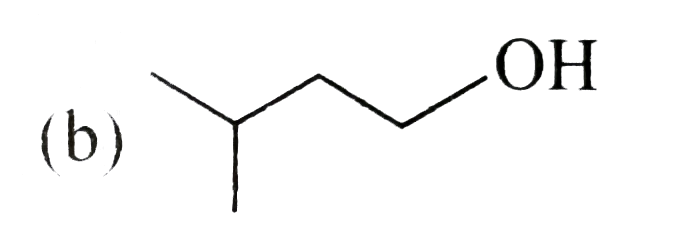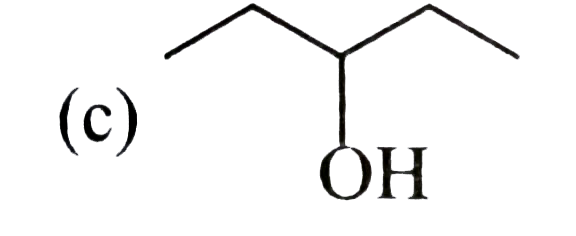An optically active compound molecular formula C5H12O(X). X oxidation with CrO3/H2SO4 given an achiral C5H10O. Hence, X could be
A

B

C

D

Video Solution
Text Solution
The correct Answer is:A
oxidation of X giving ketone as well as X is chiral, it must be a seconadary alcohol with α chiral carbon.

|
Updated on:21/07/2023
Topper's Solved these Questions
- BOOK - A2ZCHAPTER - ALDEHYDES, KETONES AND CARBOXYLIC ACIDEXERCISE - Oxidation And Reduction Of Carbonyl Compounds54videos
ALDEHYDES, KETONES AND CARBOXYLIC ACID
- BOOK - A2ZCHAPTER - ALDEHYDES, KETONES AND CARBOXYLIC ACIDEXERCISE - Cannizaro'S Reaction15videos
ALDEHYDES, KETONES AND CARBOXYLIC ACID
- BOOK - A2ZCHAPTER - ALCOHOLS, PHENOLS AND ETHERSEXERCISE - Section D - Chapter End Test30videos
ALCOHOLS, PHENOLS AND ETHERS
- BOOK - A2ZCHAPTER - BIOMOLECULESEXERCISE - Section D - Chapter End Test30videos
BIOMOLECULES
Similar Questions
Knowledge Check
- Question 1 - Select One
An optically active compound molecular formula C5H12O(X). X oxidation with CrO3/H2SO4 given an achiral C5H10O. Hence, X could be
A B
B C
C D
D
- Question 2 - Select One
Compound having molecular formula C5H12O cannot show
ATautomerismBPosition isomerismCMetamerismDFunctional isomerism - Question 3 - Select One
Compound having molecular formula C3H6O2 is:-
AC2H5−COOHBHCOOC2H5CCH3COCH3DBoth (a) and (b)
The number of metamers of the compound with molecular formula C5H12O is/are:
View SolutionThe number of aldehdes of molecular formula C5H10O is :
View SolutionAn optically active hydrocarbon X has molecular formula C6H12. X on catalytic hydrogenation gives optically inactive C6H14.X could be
View SolutionAn optically active compound 'X' has molecular formula C4H8O3. It evolves CO2 with aq. NaHCO3. 'X' reacts with LiAlH4 to give achiral compound. 'X' is :
View SolutionAn optically active compound 'X' having molecular formula C4H8O3 . It evolves CO2 with NaHCO3 . 'X' on reaction with LiAlH4 gives achiral compound. 'X' is:
View Solution

